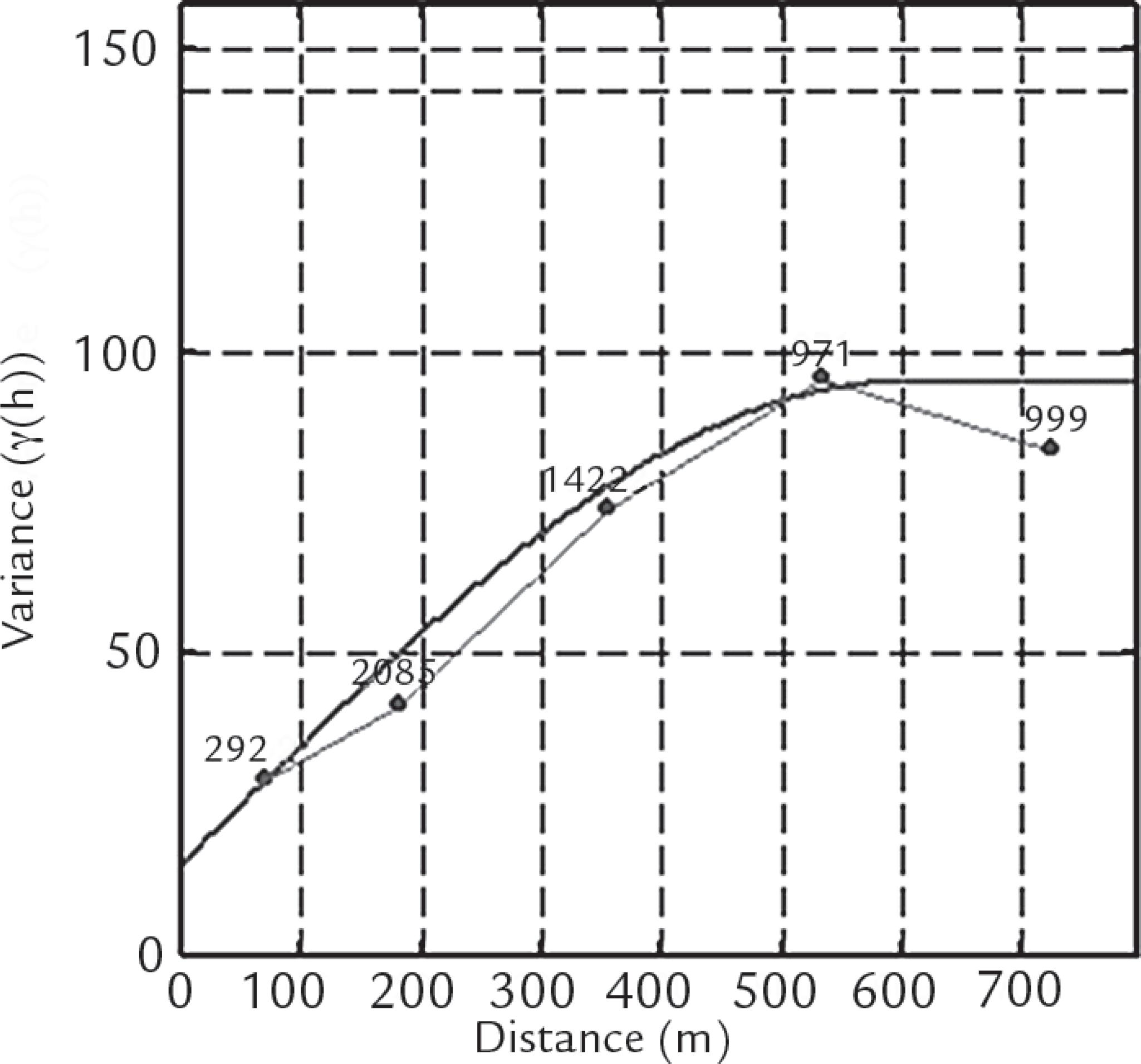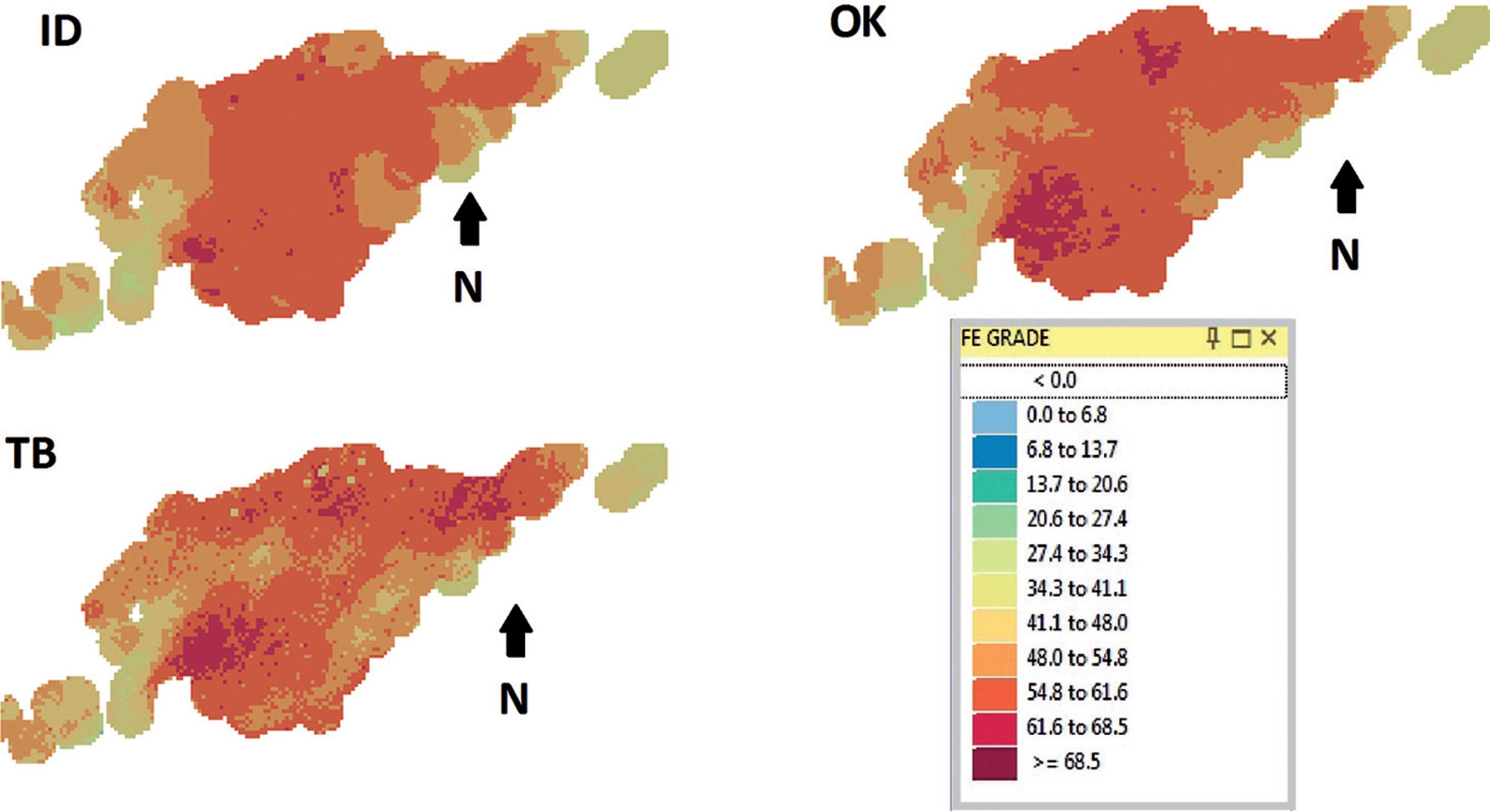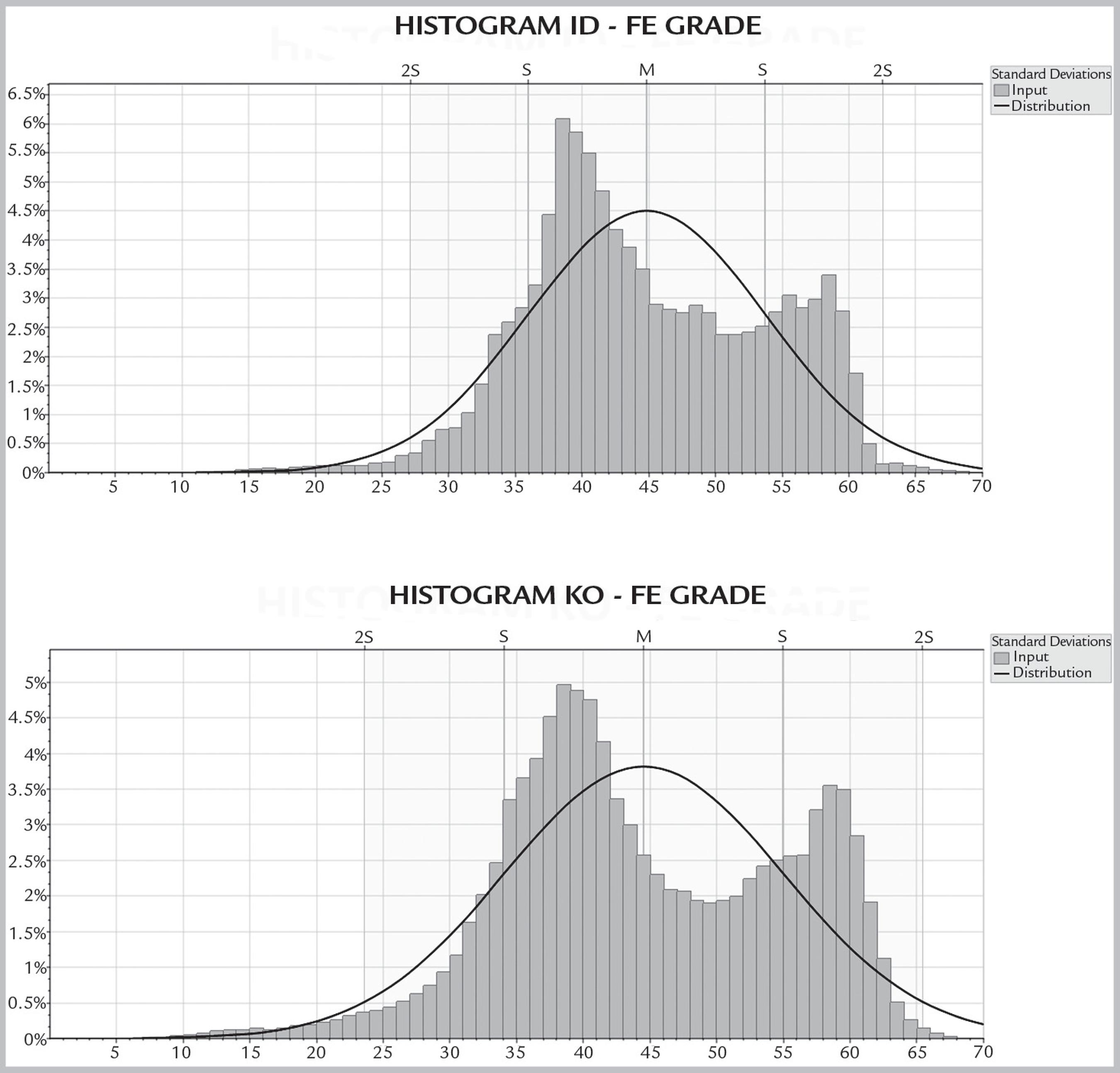Abstract
Geologic modeling is an important step in determining the benefits and final pit dimensions for mining operations. Geostatistical models and distance-based functions are the main methods used to estimate the grade behavior. However, these two methods, despite their similar mean values, differ in spatial variability. The objective of this article is to prove, by comparing the two methodologies, that models with different spatial variability using the Lerchs-Grossmann algorithm will output subtly different final pit dimensions and scheduling. Furthermore, with the direct block schedule (DBS), these differences can be considerable. The tests compared the methodologies using the following three models: inverse distance (ID), ordinary kriging (OK) and turning bands simulation (TBS). The results demonstrate that the Lerchs-Grossmann algorithm is only slightly sensitive to the spatial variability of the grade; however, DBS requires the model populations to be better defined because of its greater sensitivity to spatial variability.
keywords:
Mine Planning; Geostatistics; Geologic Modeling; Direct Block Scheduling; Lerchs-Grossmann







